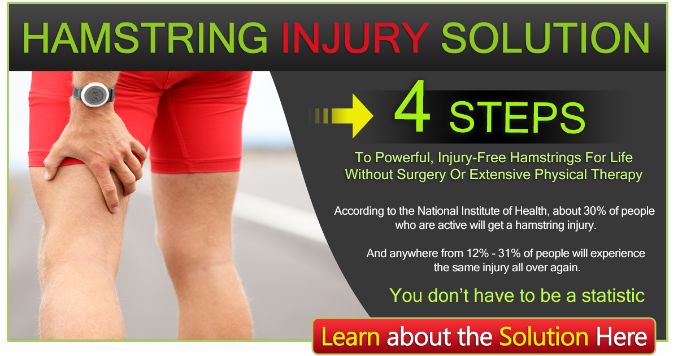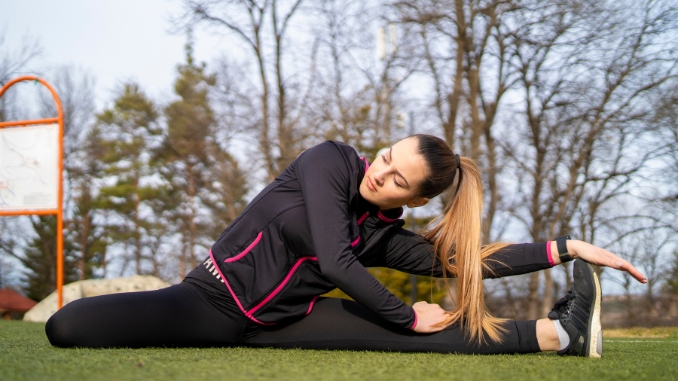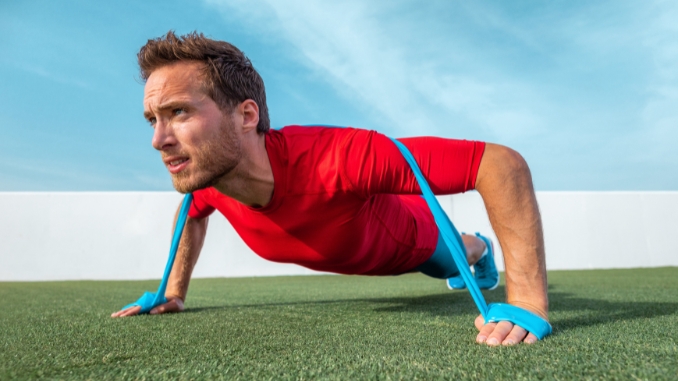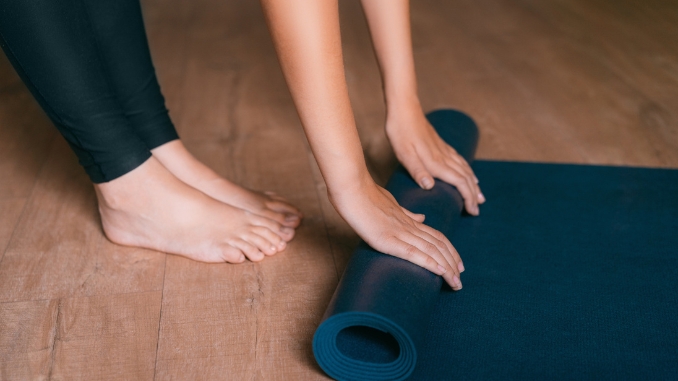Ever wondered how to recover quickly from a hamstring injury? Understanding hamstring injuries is key. These injuries happen when one or more of the muscles at the back of your thigh are strained or torn. They can be mild or severe, caused by overuse, poor flexibility, or muscle imbalances.
Hamstring Muscle

A. Biceps Femoris
The biceps femoris [¹] is one of the three muscles that make up the hamstrings. The biceps femoris is the most lateral (outermost) muscle of the hamstring group located at the back of your thigh.
It has two parts: the long head and the short head.
- Location:
- Long Head: Originates from the ischial tuberosity (pelvic bone) and inserts into the head of the fibula (outer bone of the lower leg).
Short Head: Originates from the linea aspera (a ridge on the posterior femur) and inserts into the head of the fibula.
- Function: This muscle helps in knee flexion, hip extension, and external rotation of the leg.
B. Semitendinosus
The semitendinosus [²] is a long , thin muscle that is part of the hamstring group.
C. Semimembranosus
The semimembranosus [³] is a large, flat muscle that forms part of the hamstrings.
The hamstring muscles play a vital role in various movements involving the lower body, such as walking, running, and jumping, by allowing for the bending of the knee and the extension of the hip.
Understanding Hamstring Injuries

A hamstring injury [⁴] happens when one or more of the muscles at the back of your thigh are strained or torn. These injuries can be mild or severe, caused by overuse, poor flexibility, or muscle imbalances. Mild strains need rest and ice, while severe tears may need physical therapy.
Causes of Hamstring Injuries
Athletic Activities: Hamstring injuries are common among athletes who participate in sports that involve running, jumping, and sudden changes in direction.
Traumatic Events: Acute hamstring injuries often occur due to forced hip flexion with the knee extended, such as in waterskiing.
Overuse: Repetitive irritation and overuse can lead to degenerative tears of the hamstring tendon.
Poor Flexibility: Tight hamstrings are more prone to strains and tears
Muscle Imbalances: Imbalances between the hamstrings and other muscle groups can increase the risk of injury.
Inadequate Warm-Up: Not properly warming up before physical activity can leave the hamstrings unprepared for sudden, intense movements
Sciatica Symptoms: Injuries can cause pain that mimics sciatica, with a pins and needles sensation due to compression near the sciatic nerve.
Underlying Conditions: Conditions like ischial bursitis can contribute to hamstring injuries, causing pain and tenderness over the hip and buttock areas.
Hamstring Injury Symptoms
Sudden, sharp pain in the back of the thigh
Swelling in the affected area
Bruising or discoloration
Weakness in the hamstring
Inability to bear weight on the affected leg
Muscle spasms
Stiffness in the thigh
Tenderness when pressing on the hamstring
Exercises to Avoid During Hamstring Injury Recovery
1. Heavy Weight Lifting:
Avoid exercises like deadlifts or squats that put a lot of stress on your hamstrings. These can worsen your injury.
2. High-Intensity Running or Sprinting:
Running at high speeds or doing sprint intervals can strain your hamstrings further. Stick to gentle walking or avoid running altogether until you recover.
3. Deep Stretching or Yoga Poses:
Avoid deep stretches or yoga poses that pull on your hamstrings. Poses like forward bends can aggravate the injury. Focus on gentle stretching and avoid pushing your flexibility.
Alternative Hamstring Strengthening Exercises
1. Standing Hamstring Stretch
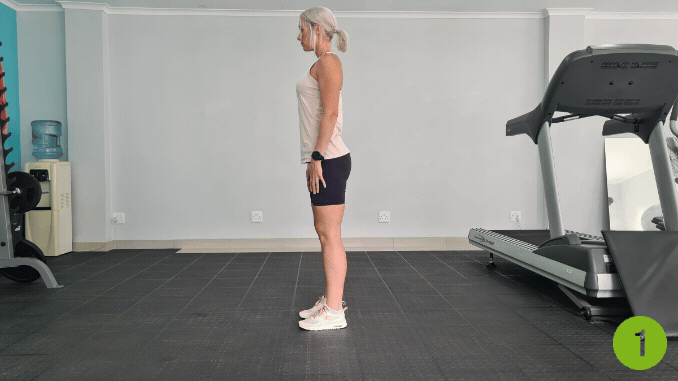
Begin in an upright standing position with feet hip-width apart, maintaining good alignment with your head, shoulders, hips, and legs. Step forward with your left foot.
Engage your core and bend your right knee as you hinge through your hips to move your upper body forward.
Press your left heel on the floor to keep your left leg extended as you reach your left toes with both arms while keeping your spine straight.
Hold the position for a couple of seconds. Relax and repeat the movement on the opposite side.
2. Seated Hamstring Stretch
For this exercise, you may need a resistance band or a towel

Begin in an upright sitting position on the floor with your legs extended, maintaining good alignment with your head, shoulders, and hips.
Hold a resistance band with both hands and place the sole of your left foot on the resistance band.
Engage your core, then lift and straighten your left leg as you lean your upper body backward away from your legs creating resistance to the band while keeping your spine straight.
Hold the position for a couple of seconds. Relax and repeat the movement on the opposite side.
3. Lying Hamstring Stretch with Band
For this exercise, you may need a resistance band, a tubing band, or a towel

Lie on your back on the floor with your legs straight, maintaining good alignment with your upper body.
Lift one leg up and loop a resistance band or towel around the arch of your raised foot.
Engage your core. Gently pull the leg towards you while keeping it straight.
Hold this position for several deep belly breaths, in through your nose and out through your mouth.
Slowly return to the starting position and repeat the movement on the opposite leg.
4. Hamstring Walk-Outs
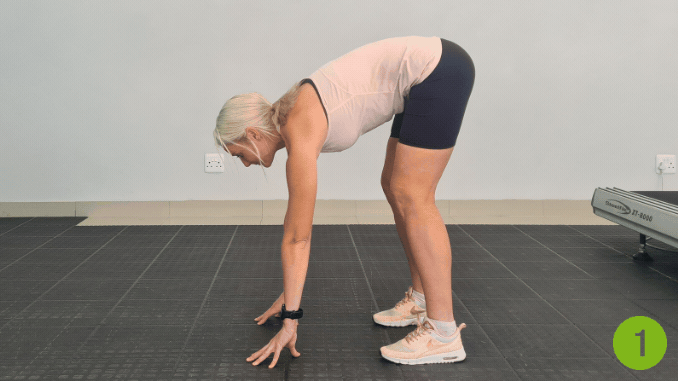
Begin in an upright standing position with your feet hip-width apart, and maintain good alignment with your head, shoulders, hips, and legs.
Engage your core. Hinge through your hips to bend your upper body forward, bend your knees to press your hands on the floor.
Then, walk your hands forward to move into a straight-arm plank position.
Hold the position for a couple of seconds, Then walk your hands back towards your feet and return to the starting position. Repeat the movement.
Managing Hamstring Strain
For mild hamstring strains, rest and apply ice packs to reduce pain and inflammation, icing for 15-20 minutes every 2-3 hours.
Use compression bandages or wraps to support and stabilize the injured leg and limit swelling.
Elevate the injured leg above heart level to reduce swelling and promote blood flow.
Take over-the-counter pain relievers like ibuprofen or acetaminophen to manage pain and reduce inflammation.
Gradually reintroduce gentle stretching and strengthening exercises after initial pain and swelling subside.
Warm up thoroughly before physical activities to prevent future hamstring strains.
Maintain good hydration and proper nutrition to support muscle health and recovery.
Avoid activities that can worsen the injury, like running, jumping, or heavy lifting, until fully healed.
Conclusion
For a speedy recovery from a hamstring injury, it's essential to understand the injury and avoid certain exercises. Hamstring injuries happen when the muscles in the back of your thigh are strained or torn, often from overuse or poor flexibility. Avoiding heavy weight lifting, high-intensity running, and deep stretching can help prevent further damage and promote healing. Remember, proper care and gradual reintroduction of activities are key to a full recovery.
Discover the ultimate Hamstring Injury Solution! Take control of your recovery with proven exercises, expert tips, and prevention strategies. Don't let a hamstring injury slow you down—start healing today and get back to doing what you love, pain-free!


